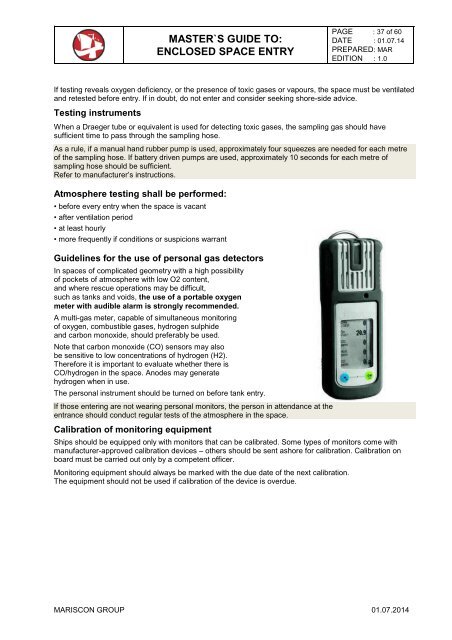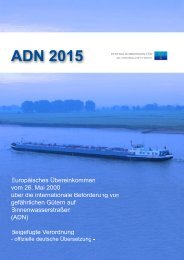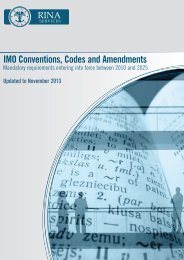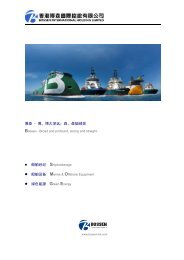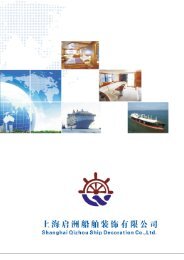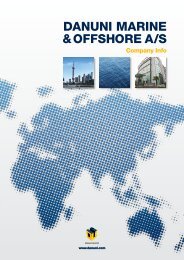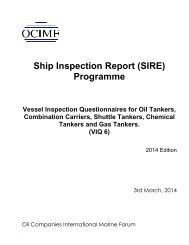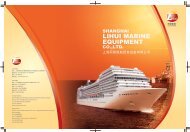MASTER`S GUIDE TO: ENCLOSED SPACE ENTRY
Create successful ePaper yourself
Turn your PDF publications into a flip-book with our unique Google optimized e-Paper software.
<strong>MASTER`S</strong> <strong>GUIDE</strong> <strong>TO</strong>:<br />
<strong>ENCLOSED</strong> <strong>SPACE</strong> <strong>ENTRY</strong><br />
PAGE : 37 of 60<br />
DATE : 01.07.14<br />
PREPARED: MAR<br />
EDITION : 1.0<br />
If testing reveals oxygen deficiency, or the presence of toxic gases or vapours, the space must be ventilated<br />
and retested before entry. If in doubt, do not enter and consider seeking shore-side advice.<br />
Testing instruments<br />
When a Draeger tube or equivalent is used for detecting toxic gases, the sampling gas should have<br />
sufficient time to pass through the sampling hose.<br />
As a rule, if a manual hand rubber pump is used, approximately four squeezes are needed for each metre<br />
of the sampling hose. If battery driven pumps are used, approximately 10 seconds for each metre of<br />
sampling hose should be sufficient.<br />
Refer to manufacturer’s instructions.<br />
Atmosphere testing shall be performed:<br />
• before every entry when the space is vacant<br />
• after ventilation period<br />
• at least hourly<br />
• more frequently if conditions or suspicions warrant<br />
Guidelines for the use of personal gas detectors<br />
In spaces of complicated geometry with a high possibility<br />
of pockets of atmosphere with low O2 content,<br />
and where rescue operations may be difficult,<br />
such as tanks and voids, the use of a portable oxygen<br />
meter with audible alarm is strongly recommended.<br />
A multi-gas meter, capable of simultaneous monitoring<br />
of oxygen, combustible gases, hydrogen sulphide<br />
and carbon monoxide, should preferably be used.<br />
Note that carbon monoxide (CO) sensors may also<br />
be sensitive to low concentrations of hydrogen (H2).<br />
Therefore it is important to evaluate whether there is<br />
CO/hydrogen in the space. Anodes may generate<br />
hydrogen when in use.<br />
The personal instrument should be turned on before tank entry.<br />
If those entering are not wearing personal monitors, the person in attendance at the<br />
entrance should conduct regular tests of the atmosphere in the space.<br />
Calibration of monitoring equipment<br />
Ships should be equipped only with monitors that can be calibrated. Some types of monitors come with<br />
manufacturer-approved calibration devices – others should be sent ashore for calibration. Calibration on<br />
board must be carried out only by a competent officer.<br />
Monitoring equipment should always be marked with the due date of the next calibration.<br />
The equipment should not be used if calibration of the device is overdue.<br />
MARISCON GROUP 01.07.2014


